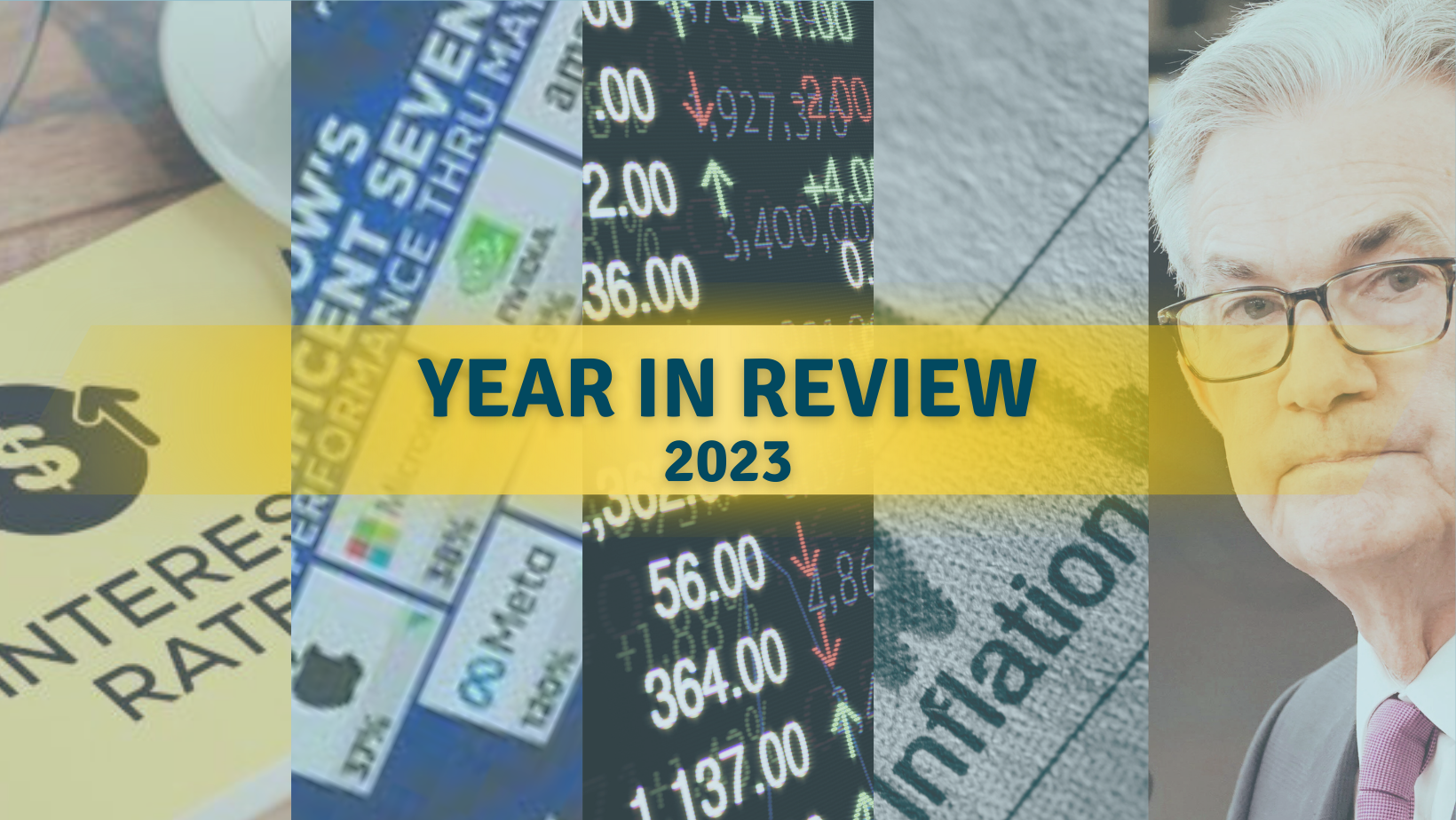
Macro Minute: Year In Review (2023)
It’s that time of year where every asset manager looks back and reflects. As I do that, I cannot help but comment on how frustrating this year has been. This year has had a banking collapse, a new bank lending facility created by the Federal Reserve, 75 basis points of Federal Reserve hikes, and mortgage rates surpassing 8%. With this amount of financial turmoil, it is no wonder that it was almost unanimously declared that a recession was to occur this year. So, what happened that prevented one from showing up? The US consumer. Throughout all the uncertainty that occurred, the US populace was employed and wages increased allowing people to pay the higher prices. People didn’t like it, but they paid for goods and services even at an elevated inflation rate. Also, you have homeowners sitting on a large amount of equity that has been built over the last couple of years with historically low mortgages. This gives the US Consumer a position of strength to weather this inflation and interests rate rise. As I mentioned last week, things are changing. The Federal Reserve now sees inflation moderating and they can envision cutting rates starting next year.
With that macroeconomic backdrop out of the way, let’s look at how my investing framework faired this year. As most know, I invest in four main categories: global equities, fixed income, real assets, and managed futures.
Let’s dig into each of these and put some numbers to them.
For global equities, I benchmark to the MSCI ACWI index. As I am writing this on December 20, 2023, the index has returned 20.59% for the year through December 19, 2023. That is a spectacular return for equities this year. This comes after equities returned -18.40% last year. So, from the beginning of 2022 to December 19, 2023, equities have returned -0.82% annualized. Let’s call it this way, equities have been flat the last two years. Maintaining my statement about this being a frustrating year, equities have been characterized by narrow leadership. Meaning that the average company lagged the index this year because the largest companies are the ones that led. I lump myself into this category. Because I tend to lean a little more into value and smaller companies, my equity exposure trailed this year.
Looking at fixed income, I use the Bloomberg Aggregate Bond index. The index has returned 4.79% through December 19, 2023. This has all come in the last quarter with it being up 6.07% in the 4th quarter. Bonds have been under a lot of pressure during this Fed hiking cycle and are down -4.61% annualized since the beginning of 2022. This is the area that I have probably been the most active in trying to navigate the last couple of years and that has been a net positive to portfolios.
The last two allocations are where our portfolios have shown diversification. Real assets are up 5.92% this year through December 19, 2023. This is after being down -14.00% last year. Meanwhile managed futures are down -7.35% this year after being up 22.13% last year. These two categories tend to be from where most diversification comes. These tend to act differently than traditional stocks and bonds, but they also have a positive expected return over time similar to stocks and bonds. They are just getting there in different ways.
All in all, the last two years has just been flat. As frustrating as that can be, the market does that regularly. It’s rarer that you have both stocks and bonds do that together, but that tends to happen when inflation is high. While it is tempting to just sit in cash now that yields are up, the finish to the year is the reason that doesn’t make sense. The market has exploded higher as inflation is coming closer to target and yields have come down. Add in the Federal Reserve signaling cuts next year, and things are starting to look brighter.
DISCLOSURES:
Please remember that past performance may not be indicative of future results. Different types of investments involve varying degrees of risk, and there can be no assurance that the future performance of any specific investment, investment strategy, or product (including the investments and/or investment strategies recommended or undertaken by Longview Financial Advisors, Inc.), or any non-investment related content, made reference to directly or indirectly in this newsletter will be profitable, equal any corresponding indicated historical performance level(s), be suitable for your portfolio or individual situation, or prove successful. Due to various factors, including changing market conditions and/or applicable laws, the content may no longer be reflective of current opinions or positions. Moreover, you should not assume that any discussion or information contained in this newsletter serves as the receipt of, or as a substitute for, personalized investment advice from Longview Financial Advisors, Inc. To the extent that a reader has any questions regarding the applicability of any specific issue discussed above to his/her individual situation, he/she is encouraged to consult with the professional advisor of his/her choosing. Longview Financial Advisors, Inc. is neither a law firm nor a certified public accounting firm and no portion of the newsletter content should be construed as legal or accounting advice. A copy of the Longview Financial Advisors, Inc.’s current written disclosure statement discussing our advisory services and fees is available upon request.